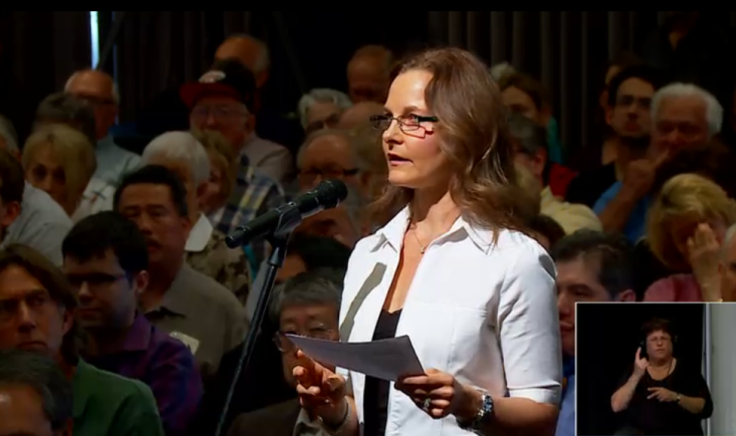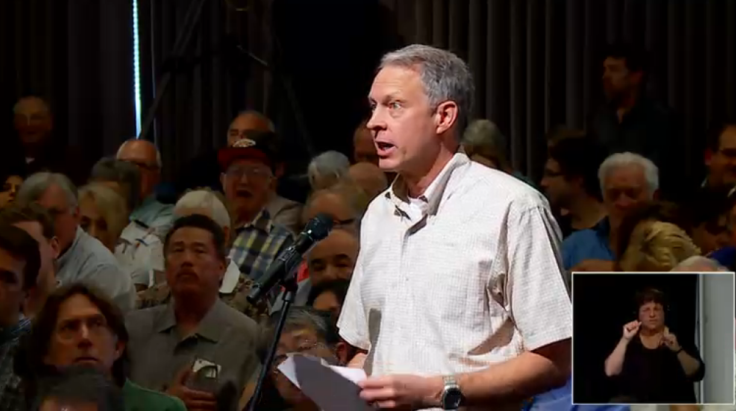Tesla Annual Shareholder Meeting: Texas Vegans Pitch Their Proposal To Get Leather Out Of Tesla Motors Cars

UPDATE, June 10, 2015, 9:23 p.m. EDT: Click here to read the "vegan Tesla" vote results. Elizabeth and Mark lost their shareholder proposals to phase out leather from future Tesla car options, but not without some supporters.
Original story begins here:
After working for months to win six minutes at Tuesday’s Tesla Motors fifth annual shareholder meeting, Elizabeth Farrell Peters and her husband, Mark Peters, asked fellow Tesla Model S owners and company stakeholders to think about whether the electric carmaker should be offering leather as a luxury option. The Peters maintain a vegan household at their Hurst, Texas, home, but their request is more than personal.
“Tesla has two choices,” Elizabeth said during her three-minute pitch supporting a measure that would phase leather out of Tesla’s supply chain. “Tesla can continue to fill cars with skins of sentient beings … while adding a massive amount of greenhouse gas to the air. … Or Tesla can adopt many of the faux leather interiors used by Mercedes-Benz, Lexus, Infiniti and others.”
Leather has long been a part of the luxury car business, and even the companies that offer alternatives have yet considered eliminating the animal-product option. But the couple said that Tesla should raise the bar considering its environmental mission. Shareholders voted on the proposals. Results will be posted within four business days.

The couple offered two shareholder proposals: one in which the company would stop offering leather by 2019 and one in which it would offer cruelty-free synthetic alternatives used by other luxury carmakers that generates as much as 65 percent fewer carbon dioxide emissions.
Tesla has recommended shareholders vote against the measures, citing the need to prioritize its objectives. But Tesla CEO Elon Musk hinted Tuesday that the company might consider alternatives.
“Yeah, absolutely,” he said. “We’ll look into it.”
Mark and Elizabeth Peters have plenty of data to back up the implications of leather in the automotive industry and elsewhere. A 2006 report from the U.N. Food and Agricultural Organization estimates livestock farming makes up 18 percent of all greenhouse gas emissions. And the process of leather tanning is a highly toxic process.
Since Tesla’s core mission is to reduce the impact of human-caused global warming, the Peterses say the use of leather is antithetical to the company’s forward-thinking mission. “Frankly, it’s un-Tesla,” to use leather in its cars, Mark said.
Tesla bundles leather armrests and dashboards in a $3,000 option package that includes the power liftgate, interior accent lighting, fog lights and illuminated door handles. Customers who want any of those items have to get leather trim. Another $3,000 option provides fancier “executive” rear seating, but only in leather. Stephanie Downs, a member of corporate affairs at the nonprofit animal rights group People for the Ethical Treatment of Animals, stood up during the meeting to back the proposals.
“Regardless of anyone's dietary preference, the production of leather uses massive amounts of toxic substances,” she told the crowd, referring to the other environmental hazard of curing animal skin, the salts, lime sludge, sulfides, acids and arsenic used to preserve the skins.
© Copyright IBTimes 2024. All rights reserved.












